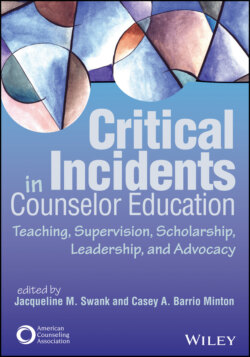Читать книгу Critical Incidents in Counselor Education - Группа авторов - Страница 36
Preventing Plagiarism in Future Classes
ОглавлениеGraduate students have a wide variety of backgrounds, and counselor educators should consider strategies for preventing plagiarism. Faculty members may teach minilessons on plagiarism early in their classes and include tips on how not to plagiarize in their syllabi. They can also use worksheets and widely circulated plagiarism materials available through programs like Turnitin. Most colleges and universities also have preventive information. For example, the City University of New York at Hunter offers information on their website (see www.hunter.cuny. edu/studentaffairs/repository/files/What%20is%20Plagiarism.pdf).
Counselor educators can assess students’ understanding of plagiarism early in their classes. Often they may be surprised by how little students understand plagiarism in its many forms. Unlike the blatant plagiarism in this scenario, more subtle forms of plagiarism often become a problem.
By sharing information in their syllabi, counselor educators can ensure that students have resources they can lean on when they are unsure about whether they are plagiarizing. When going over the syllabus during the first week of class, educators may have a short introductory discussion of their expectations for the quality of student work. At a minimum, students should receive a quick overview of cut-and-paste plagiarism, paraphrasing plagiarism, citing of quotations, and self-plagiarism at the beginning of the course.
Later counselor educators can discuss proper paraphrasing and how, even with in-text citations and references, paraphrases too close to the original source may be considered plagiarism. Taking a sentence and changing one or two words is common practice among students in early submissions of their work. Counselor educators may also notice overquoting within an assignment. These more subtle forms of plagiarism may be honest mistakes students have not had a chance to learn about within their undergraduate education.
Counselor educators may find that students misunderstand the appropriateness of resubmitting assignments (i.e., self-plagiarism) to multiple professors when they teach similar topics, in particular graduate students who often have limited time in their busy schedules. The idea of resubmitting the same work or cutting and pasting large parts of the same idea for a new assignment can seem both attractive and time effective. Students are often surprised to learn that they cannot cut and paste from their own work without citing the original work. Counselor educators should be creative and build assignments in ways that minimize the possibility of student plagiarism through duplication. Brainstorming with colleagues who teach similar courses at their own and other institutions can allow professors to gauge how common an assignment is. Instructors can also build assignments that require a thorough understanding of course materials while also allowing for self-reflection, as doing so can give assignments depth. To add these reflections, students must understand the material well enough to create connections. It is difficult for students to unknowingly plagiarize reflections when connecting them to course content, even if they are retelling an experience they shared in another class.
It is important for professors to share the rules students need to follow regarding academic honesty as an important part of their dialogue and rapport building. For example, Professor P could share how part of their professional requirements include the publication of articles and research. Like students in their classes, professors cannot submit the same work to more than one journal at a time. Even reworking an already published piece is discouraged and toes the line of self-plagiarism. Faculty members may also help their students understand that it is common practice to reformat course papers into articles for specific journals; this is acceptable and is not considered a form of plagiarism.
